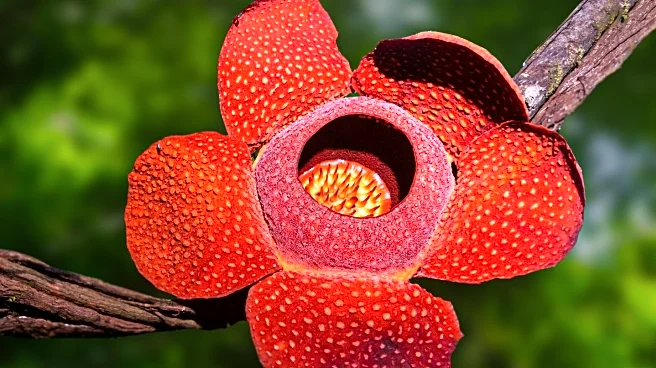What is the story about?
What's Happening?
Rafflesia, known as the corpse flower due to its odor resembling rotting flesh, is facing extinction threats primarily due to habitat destruction and deforestation in Southeast Asia. The flower, which can reach up to 3 feet in diameter, relies on carrion flies for pollination. Conservationists are implementing multi-pronged strategies to save the species, including establishing protected forest areas and promoting ecotourism. The Heart of Borneo program, supported by the governments of Brunei, Malaysia, and Indonesia, aims to preserve Borneo's untouched forests, vital for rare plants like Rafflesia.
Why It's Important?
The extinction of Rafflesia could disrupt the ecological balance in Southeast Asian rainforests, where it plays a crucial role as a parasitic species feeding on host plants. The loss of this flower would not only affect biodiversity but also cultural and ecological symbols for Indigenous communities. Conservation efforts are critical to maintaining ecosystem diversity and stability, which are threatened by deforestation for timber extraction and agricultural expansion.
What's Next?
Conservationists are advocating for increased protection of Rafflesia habitats and the implementation of ex-situ conservation methods. Local communities are actively involved in cultivating Rafflesia species, and initiatives like the Heart of Borneo program continue to focus on forest preservation. The success of these efforts could lead to sustainable practices benefiting both the environment and local populations.
Beyond the Headlines
The cultural significance of Rafflesia to Indigenous communities highlights the ethical dimension of conservation efforts. Rituals performed by groups like the Orang Asli before entering Rafflesia habitats underscore the spiritual connection to these ecosystems. The preservation of Rafflesia is not only a scientific endeavor but also a cultural imperative.
AI Generated Content
Do you find this article useful?















